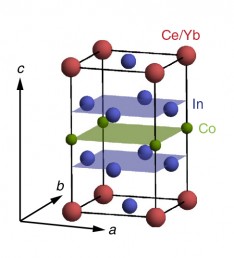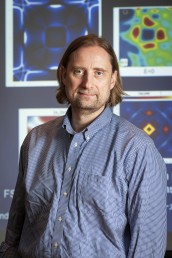20-year-old theory confirmed, may point to practical superconductor
Theoretical physicist Dirk Morr had to wait nearly 20 years for an important conjecture of his – one with important implications for commercial energy production – to be borne out by experiment.
“Being in science means you are in for the long run,” says Morr, “and sometimes you have to wait a little longer before your ideas are confirmed.” This is exactly what happened with an idea he put forth in 1997 while studying a promising class of high-temperature superconductors as a postdoctoral associate at the university’s Urbana-Champaign campus.
Energy is difficult to transport, and scientists have spent decades searching for a way to transfer energy from the places it can be sustainably created to where it is needed. Solar energy harvested in the desert southwest, or wind energy captured in the plains, must travel a long way to reach the population centers where electricity demand is high. Conventional transmission lines are inefficient, since much of the electrical energy is lost as heat due to resistance in the wires.
Superconductors carry electricity without any loss of energy but need to be cooled down to near absolute zero to work. For a century, scientists have hunted for a material that reaches its critical point for superconductivity at near-ambient temperatures.
Morr, now professor of physics at UIC, was already part of this massive undertaking as a young researcher in 1997. About 10 years earlier, a new class of superconductors – the cuprate, or copper-based superconductors – had been discovered, which needed to be cooled only to minus 160 degrees Fahrenheit to work, rather than the minus 440 required for other superconductors then known.
“This was a major step in the right direction,” said Morr, “and it was clear that we needed to understand what makes these new superconductors work.”
Morr was working with David Pines, a professor of physics at the Urbana-Champaign campus, who had suggested that magnetism might be important for high-temperature superconductivity. In a 1998 paper, Morr proposed that a distinct experimental signature would, if observed, establish the importance of magnetism in superconductivity. But in two decades of experiments, all around the world, no trace of that signature was found.
Recently, a collaboration led by Morr at UIC and Pengcheng Dai at Rice University finally uncovered this long-sought fingerprint in a different class of superconductors that shares many features with the cuprate superconductors.
In the new experiments, the Rice physicists worked for two years to observe resonance behavior in three so-called “unconventional” superconductors – one made of cerium, cobalt and indium, and two others in which ytterbium was substituted for portions of cerium.

Crystal structure of one of the compounds studied, cerium-cobalt-indium doped with ytterbium
The Rice team used a technique known as inelastic neutron scattering, conducted on instruments at the Technische Universität in Munich and at the National Institute of Standards and Technology in Gaithersburg, Maryland. They were able to show how the magnetic resonance of the materials developed and behaved at the critical point where superconductivity arose – and confirmed Morr’s prediction.
“This observation finally answers some of the questions we had for the last 20 years and shows how interwoven superconductivity and magnetism are,” said Morr. “It fills in one of the major missing blocks in our understanding of superconductivity, and points us towards new ideas for creating higher temperature superconductors.”
The discovery not only helps narrow down the search for better superconductors to materials with very specific properties, Morr said – it also provides him and the experimental physicists some vindication.
“We now also understand why this experimental signature was not observed earlier,” he said.
“Sometimes you have to hold your breath for a long time – but in the end, patience pays off.”

